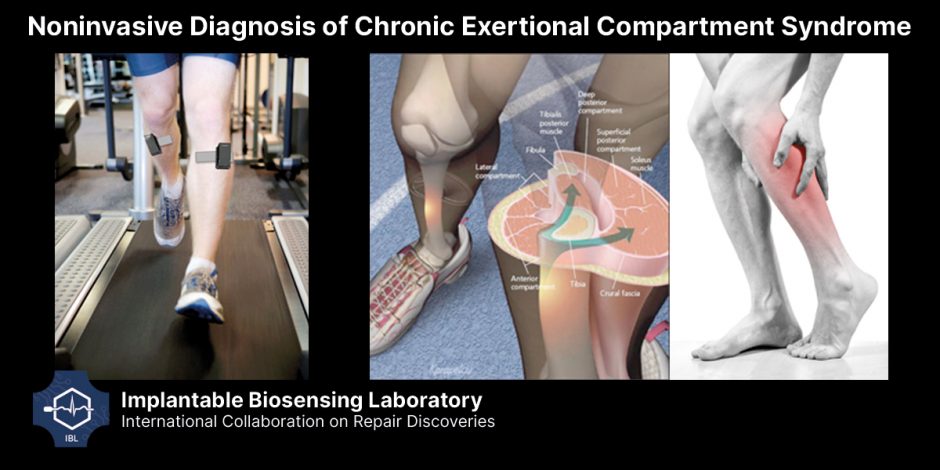
Active people and athletes affected by chronic exertional compartment syndrome (CECS) experience progressive leg pain during exercise, limiting their activity and performance. The mechanism of this pathological condition is an abnormal and progressive increase in intra-compartmental pressure (ICP) in one or more compartments of the leg leading to impaired local tissue perfusion that results in muscle ischemia and oxidative damage. Proper management of chronic exertional compartment syndrome (CECS) requires a precise diagnosis. The current diagnostic method is based on subjective clinical assessment confirmed by invasive measurement of the leg’s intra-compartmental pressure (ICP) during exercise. The technique involves inserting multiple needles into the leg compartments and recording ICP changes before, during, and after an exercise protocol. Although providing valuable information, this method is invasive, high-risk, expensive, difficult to conduct by clinicians, and unpleasant to patients.
We are testing a novel transcutaneous optical sensor, designed and developed by our team for noninvasive, quick, and convenient diagnosis of CECS.
Related Publications:
- Shadgan B, et al. (2010); PMCID: PMC2947124
- Shadgan B, et al., (2008); DOI: 10.1097/BOT.0b013e318183136d
Supported By:

